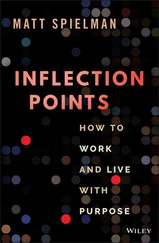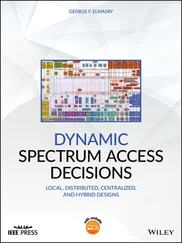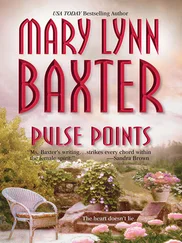Leon’s logical mind went to work. He argued that embryos—even those long frozen—had the potential for life and thus deserved some form of respect. “One goes with a heavy heart if we use these things,” he said. “We at least owe them the respect not to manipulate them for our own purposes. We are dealing with the seeds of the next generation.”
I shared an idea: What if I authorized federal funding for embryonic stem cell research—but solely for existing stem cell lines? The embryos used to create those lines had been destroyed. There was no way to get them back. It seemed logical to let scientists use them to pursue treatments that might save other lives. But that raised another question: If I allowed federal funding for research that relied on destroyed embryos, would I be tacitly encouraging further destruction?
Leon said he believed that funding research on already destroyed embryos would be ethical, with two conditions. I must reaffirm the moral principle that had been violated—in this case, the dignity of human life. And I must make clear that federal funds would not be used in the further destruction of embryos. So long as I did both, he said, the policy would pass the ethical test. “If you fund research on lines that have already been developed,” he said, “you are not complicit in their destruction.”
The conversation with Leon crystallized my thinking. I decided that the government would fund research on stem cell lines derived from embryos that had already been destroyed. At the same time, I would ask Congress to increase federal funding for alternative sources of stem cells that brought no ethical controversy. And I would draw a firm moral line: Federal tax dollars would not be used to support the destruction of life for medical gain. I also created a new presidential bioethics council, composed of experts from all backgrounds and chaired by Leon Kass.
The next step was to announce the decision to the American people. Karen suggested a rare primetime speech to the nation. When the president addresses the nation in primetime, he usually speaks as commander in chief. In this case, I would be speaking as educator in chief. I liked the idea. Stem cell research was a serious issue for the nation, but an obscure one for most citizens—as it had been for me in January. Explaining my decision would be almost as important as making it.
On August 9, 2001, I addressed a nationwide network TV audience from Crawford, Texas—definitely a first in presidential history. The night before the speech, Laura and I had dinner with Jay, Karen and her son Robert, and a family friend, Fort Worth interior designer Ken Blasingame. I asked Jay to say a prayer before we began the meal. He delivered some thoughtful words. As he finished, we all kept our heads bowed, waiting for the amen. After a few seconds of hanging, Jay told us that Jewish prayers don’t always end with amen. It was a fitting conclusion to a process filled with learning.
“Good evening,” I began my address, “I appreciate you giving me a few minutes of your time tonight so I can discuss with you a complex and difficult issue, an issue that is one of the most profound of our time.” I outlined the dilemma: “While we must devote enormous energy to conquering disease,” I said, “it is equally important that we pay attention to the moral concerns raised by the new frontier of human embryo stem cell research. Even the most noble ends do not justify any means.”
Near the end, I pivoted to my decision: Embryonic stem cell research offers both great promise and great peril. So I have decided we must proceed with great care. … I have concluded that we should allow federal funds to be used for research on these [existing] stem cell lines, where the life-and-death decision has already been made. Leading scientists tell me research on these sixty lines has great promise that could lead to breakthrough therapies and cures. This allows us to explore the promise and potential of stem cell research without crossing a fundamental moral line, by providing taxpayer funding that would sanction or encourage further destruction of human embryos that have at least the potential for life. … I have made this decision with great care, and I pray it is the right one.
For weeks before the speech, I had felt a sense of anxiety. I had constantly questioned my assumptions and weighed the options again and again. With the decision made, I felt a sense of calm. I didn’t know what the reaction would be. We hadn’t commissioned a focus group or taken a poll. Just as we had waited for the amen at the end of Jay’s prayer, we settled in to await the response.

Reaction to my stem cell decision poured in quickly. Many politicians and activists on both sides praised the policy as reasonable and balanced. While some scientists and advocacy groups responded with disappointment, many welcomed the unprecedented federal funding as a vote of confidence in their work. The head of the Juvenile Diabetes Research Foundation issued a statement saying, “We applaud the president for supporting embryonic stem cell research.” My friend Kent Waldrep, the paralyzed TCU football player on whose advocacy board I used to sit, told a reporter, “It does everything the scientific community needs and I think a little bit more.”
To the degree that I faced criticism, it came from the right. One conservative activist compared my decision to Nazi conduct during the Holocaust. Another said, “I am ashamed of our president, who compromises and gives my generation the … mentality that human life can be picked apart, abused, and destroyed.” The spokesman for the U.S. Conference of Catholic Bishops said, “I seem to be the only man in America who is against the president’s policy.”
His loneliness did not last long. The tone of the debate quickly became heated and harsh. Looking back, it is clear that a toxic pair of factors had converged: money and politics.
Many of the first to turn against the policy were scientists. By providing some federal funding, I had whetted their appetite for more. In the spring of 2002, I addressed a major complaint by allowing privately funded embryonic stem cell research to be conducted at facilities that received federal dollars. It was an important step, but it did not satisfy the scientists, who constantly demanded more.
Advocacy groups quickly followed. Their high hopes for new cures had led them to make unrealistic promises. They seemed to feel that limiting the number of stem cells available for research would delay breakthroughs. They recruited well-meaning Hollywood stars to tug at heartstrings. They also discovered that the issue could help them raise large amounts of money. Some who had initially supported my decision transformed into vocal critics.
Politicians recognized that they, too, could capitalize on the issue. By 2004, Democrats had concluded that stem cell research was a political winner. It allowed them to open a new front in the abortion debate while also claiming the mantle of compassion. Candidates across the country ran TV ads that highlighted the benefits of embryonic stem cell research without mentioning that the science was unproven, the morality was in doubt, and ethical alternatives existed.
The Democratic presidential nominee, Senator John Kerry, campaigned hard on the issue. Kerry frequently criticized what he called a “ban” on embryonic stem cell research. I pointed out that there was no such ban. To the contrary, I was the first president in history to fund embryonic stem cell research. Plus, there were no restrictions on funding from the private sector.
Nonetheless, Kerry’s campaign used stem cell research as the foundation for a broader attack, labeling my positions “anti-science.” The charge was false. I had supported science by funding alternative stem cell research, promoting clean energy development, increasing federal spending on technology research, and launching a global AIDS initiative. Yet the demagoguery continued all the way up to the election. The low point came in October, when Kerry’s running mate, Senator John Edwards, told a political rally in Iowa that if Kerry became president, “people like Christopher Reeve* will get up out of that wheelchair and walk again.”
Читать дальше












